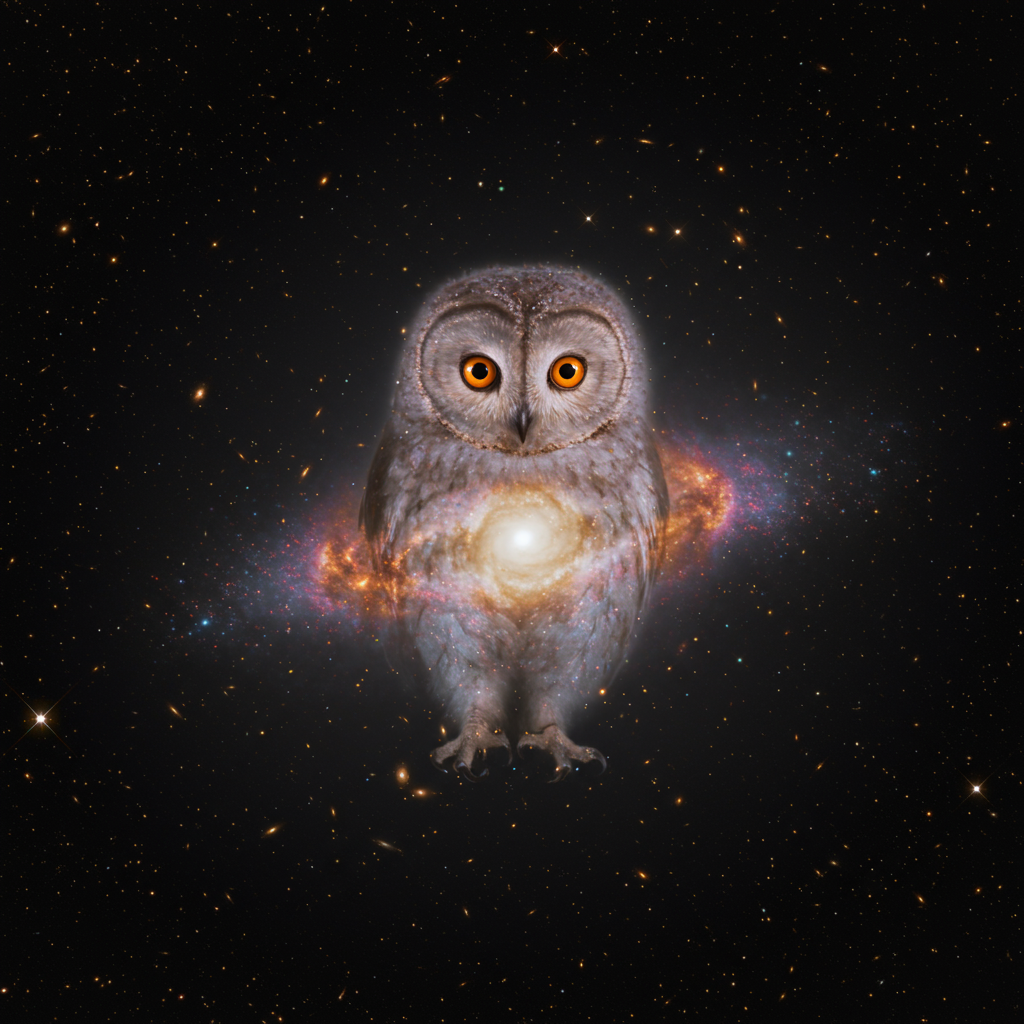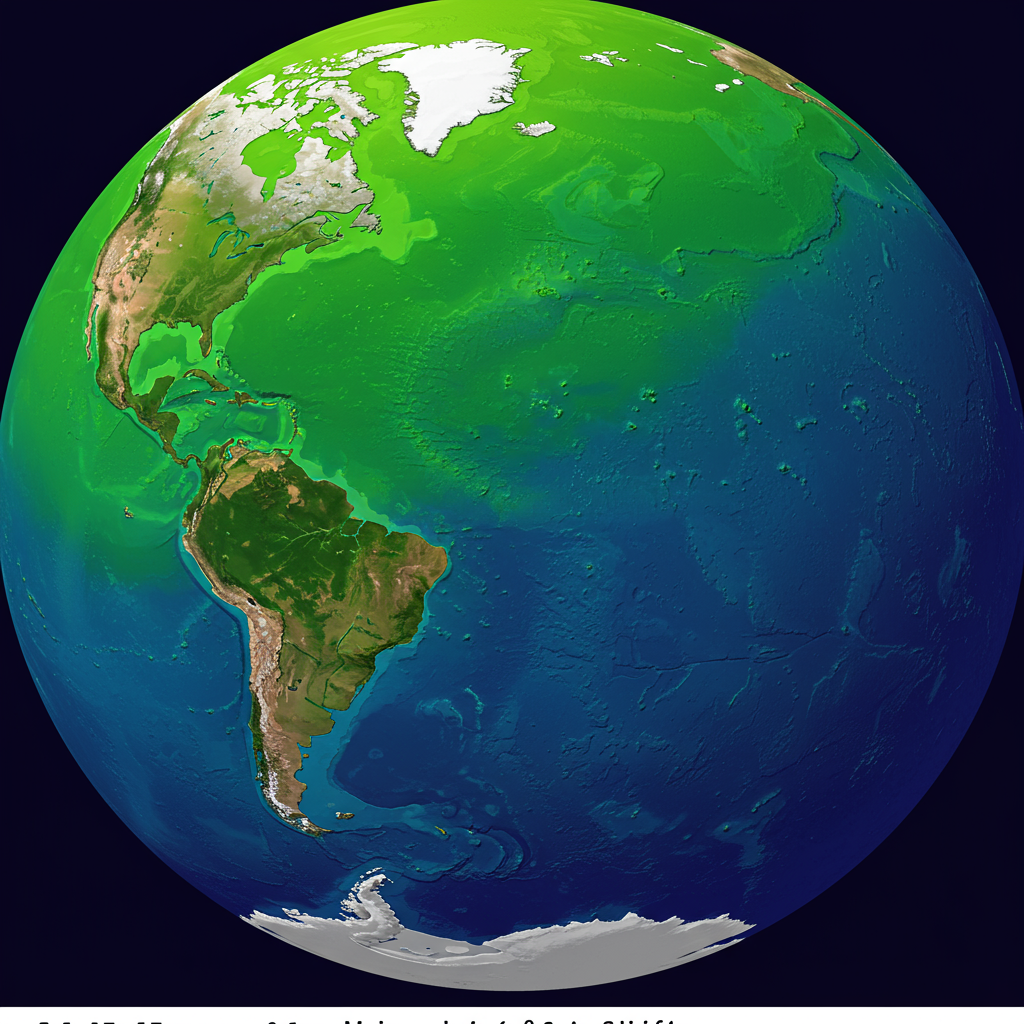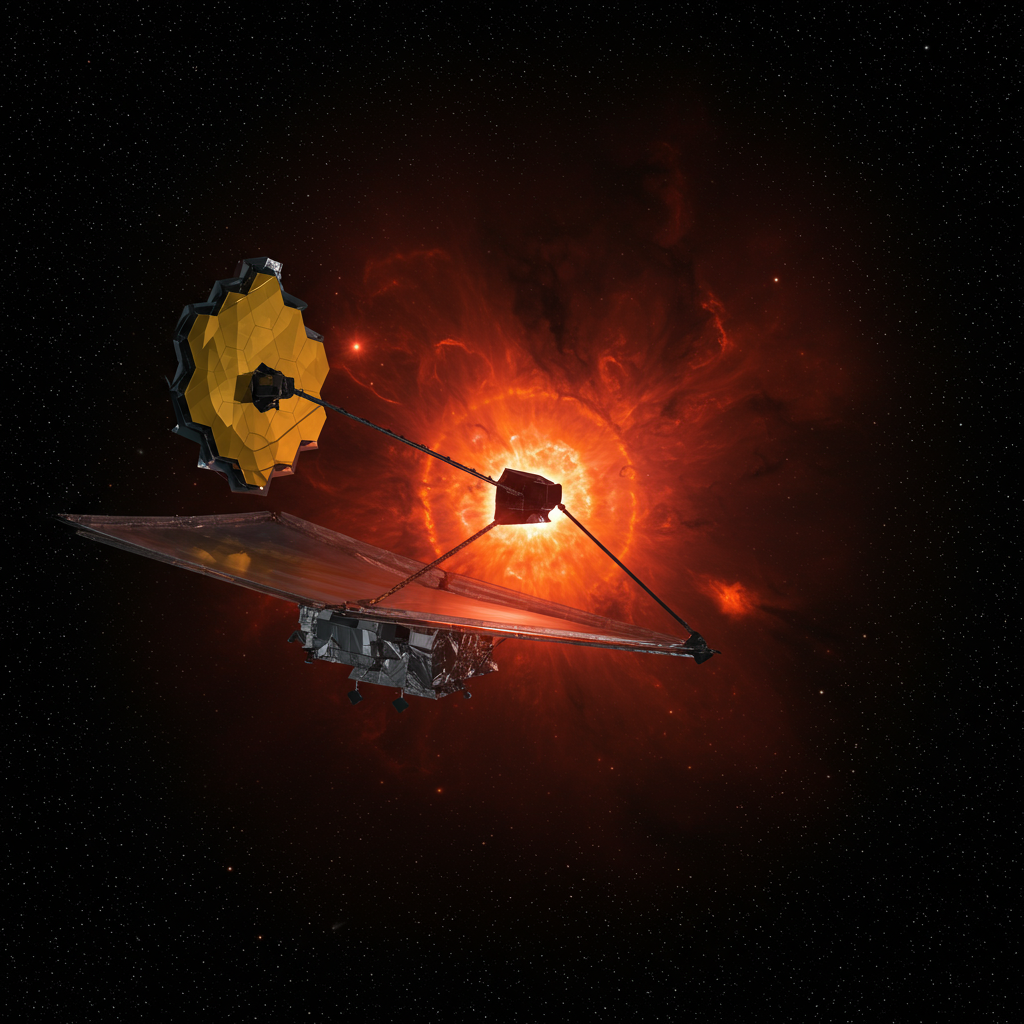Deep within the cosmos, the James Webb Space Telescope (JWST) has peered across billions of light-years to capture an astonishing sight: an astronomical structure resembling an owl, affectionately nicknamed the “cosmic Owl.” This isn’t just another stunning space photo; it’s an incredibly rare collision between two distant ring galaxies, offering scientists an unparalleled natural laboratory to study how galaxies evolve and create stars.
Locating objects billions of light-years away provides a window into the early universe. The “Cosmic Owl” was found at a redshift of 1.14, placing it approximately 11 billion light-years distant. This makes the image we see today a snapshot of the universe when it was much younger. Discovered serendipitously within public JWST data of a well-studied sky region called the COSMOS field, this structure immediately stood out due to its unusual shape and the telescope’s exceptional imaging capabilities.
What is the Cosmic Owl? A Galactic Crash Site
The structure dubbed the “Cosmic Owl” is precisely what its name suggests visually: a pair of cosmic objects configured like an owl’s face. This appearance results from the ongoing collision of two galaxies. Unlike the familiar spiral shape of our Milky Way or oval ellipticals, these are rare “ring galaxies.” Ring galaxies form when a smaller galaxy punches straight through the center of a larger one, sending ripples of stars and gas outwards into a distinctive ring around a relatively empty core. Hoag’s Object is a famous example of a solitary ring galaxy.
What makes the “Cosmic Owl” exceptional is that it involves two ring galaxies colliding – an event far rarer than finding a single one. Ring galaxies account for only about 0.01% of all known galaxies. Detecting two of these unusual structures interacting at such a great distance provides a unique observational opportunity. While the discovering team named it the “Cosmic Owl,” another independent team detecting the same object referred to it as the “Infinity galaxy,” highlighting its fascinating and complex nature.
Eyes and Beak: Anatomy of the Cosmic Collision
JWST’s detailed observations reveal the intricate structure behind the owl facade. Each “eye” of the Cosmic Owl corresponds to the central core of one of the two colliding ring galaxies. These cores are dense regions packed with ancient stars. They also host supermassive black holes at their centers, each weighing over 10 million times the mass of our sun. JWST data confirmed that both these black holes are actively pulling in surrounding material. This activity classifies them as active galactic nuclei (AGN), powerful engines that can significantly influence their host galaxies.
In stark contrast to the old stars and active black holes in the “eyes,” the “beak” of the Cosmic Owl is a zone of intense cosmic activity. This region represents the collision front where the two galaxies are directly interacting. Data from the Atacama Large Millimeter/submillimeter Array (ALMA) in Chile showed that this area contains an immense concentration of molecular gas. Molecular gas is the fundamental raw material needed to form new stars. The forceful collision between the galaxies is compressing this gas, creating conditions ripe for star formation.
Star Formation Triggered by Multiple Forces
Further observations using the Very Large Array (VLA) in New Mexico provided another crucial piece of the puzzle. These radio observations indicated that a jet of charged particles, spewing outwards from the supermassive black hole in one of the galactic cores, is also impacting the gas cloud in the “beak” region. This powerful jet adds to the compression already caused by the galactic collision’s shock waves.
According to researchers, the combined effect of the collision’s shock front and the impact of the radio jet has triggered a monumental burst of star formation. This makes the “beak” area a highly active ‘stellar nursery,’ churning out new stars at a rapid pace. Simulations of galactic collisions suggest they typically unfold over several hundred million years. Scientists estimate this specific collision began around 38 million years ago, meaning the distinctive owl-like morphology should remain visible for a considerable cosmic timeframe.
A Natural Laboratory for Galaxy Evolution
Beyond its striking visual appearance, the Cosmic Owl is described as an “exceptional natural laboratory.” Its unique configuration allows astronomers to simultaneously observe multiple critical processes involved in the evolution and growth of galaxies within a single system. Studying this object provides valuable insights that are difficult to gain from isolated galaxies or less complex interactions.
One significant takeaway is the intense star formation observed in the beak. The fact that both collision shock waves and radio jets are contributing to compressing gas and triggering star birth suggests this dual mechanism could be a crucial, potentially underestimated way galaxies rapidly convert their gas into stars. Understanding this process is vital for explaining how galaxies built up their stellar mass so quickly in the early universe, a period sometimes referred to as “cosmic noon.”
Future Studies and JWST’s Unique Gaze
Researchers plan to conduct further detailed studies of the Cosmic Owl. This includes running sophisticated simulations of the gas dynamics during the collision. These simulations aim to pinpoint the precise physical conditions that could lead to the formation of such a symmetrical “twin-ring” structure from colliding galaxies. Factors like the initial structure of the galaxies and the angle at which they collided are key to understanding this rare outcome.
The discovery of the Cosmic Owl adds to the growing list of bizarre and beautiful cosmic phenomena revealed by the James Webb Space Telescope. JWST has already captured images of a “jellyfish” galaxy with tentacle-like streams of gas, a peculiar question-mark-shaped structure formed by interacting galaxies, and various other uniquely shaped objects. Each new image and data set from JWST pushes the boundaries of our understanding of the universe’s dynamic and complex nature. These observations underscore JWST’s unparalleled ability to detect distant, faint, and unusual structures that provide critical clues to cosmic history.
Frequently Asked Questions
What is the “Cosmic Owl” spotted by James Webb?
The “Cosmic Owl,” also known as the “Infinity galaxy,” is a super-rare astronomical structure observed by the James Webb Space Telescope. It is formed by the head-on collision of two distant galaxies, specifically two rare ring galaxies. Located approximately 11 billion light-years away, its distinctive shape resembles an owl’s face, with the cores of the galaxies forming the “eyes” and the collision front creating the “beak.”
How does the James Webb Space Telescope observe objects like the Cosmic Owl?
The James Webb Space Telescope (JWST) uses its advanced infrared instruments to observe distant cosmic objects like the Cosmic Owl. In this case, public JWST data allowed scientists to identify the structure due to its high resolution and sensitivity. The discovery was then supplemented with data from other telescopes, like the Atacama Large Millimeter/submillimeter Array (ALMA) for molecular gas detection and the Very Large Array (VLA) for radio observations of black hole jets.
Why is studying the Cosmic Owl galaxy collision important for astronomy?
Studying the Cosmic Owl is crucial because it acts as a unique “natural laboratory.” It allows astronomers to observe multiple key processes of galaxy evolution happening simultaneously within one system, such as the interaction of supermassive black holes (AGN), the dynamics of galactic collisions, and intense star formation. It provides insights into how galaxies quickly built stellar mass in the early universe, particularly through shock wave and radio jet-triggered star birth.
The discovery of the Cosmic Owl highlights the power of telescopes like JWST to uncover the universe’s most unusual and scientifically valuable objects. Its rare formation and the ongoing processes within it offer astronomers an exceptional opportunity to learn more about the forces that shape galaxies across cosmic time. As JWST continues to observe the universe, many more unique structures likely await discovery, each holding clues to the vast cosmic tapestry.
Word Count Check: 1055




